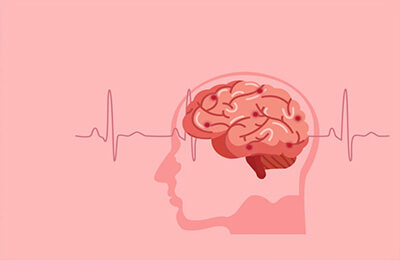单倍体造血干细胞移植进展
时间:2022-10-19 10:28:20

造血干细胞移植(Hematopoietic stem cell transplantation,HSCT)是临床上治疗血液病的重要手段之一。单倍体造血干细胞移植指在高分辨配型下,供受者间编码HLA A、B、C、DR、DQ几个位点的等位基因中至少有五个位点相合,且有五个相合的HLA基因位点位于同一条DNA单链上,这样的造血干细胞移植方式称为单倍体造血干细胞移植(Haploidentical Hematopoietic stem cell transplantation,haplo-HSCT)。根据孟德尔遗传定律,父母与子女之间HLA单倍体相合的概率为100%,同胞间单倍体相合的概率为50%。这一结果远高于20%的非血缘相关全相合(Matched unrelated donor,MUD)供者的概率及10%的同胞全相合(HLA-identical sibling donor)概率[1,2]。非血缘相关全相合造血干细胞移植配型耗时长,平均约需3~6月,使得部分患者在等待供者过程中疾病复发[3~6]而丧失最佳救治时机。脐血造血干细胞移植因其造血干细胞数量少、花费高而受限于成人造血干细胞移植[7]。因此,单倍体造血干细胞移植以其供者来源广泛,供者依从性强,耗时短[8]等特点优于其他类型造血干细胞移植,成为目前最具有潜力、最适应社会现状的移植方式。本文主要综述单倍体造血干细胞移植治疗血液病的进展。
1 单倍体造血干细胞移植供者选择
符合单倍体造血干细胞移植供者条件的包括患者父母、子女甚至部分同胞等,如何在其中选择最优供者仍是目前研究热点。人们发现,在单倍体相合基础上,供受者间HLA不相合位点数与移植相关死亡率、急慢性移植物抗宿主病发生率、生存率之间无直接联系[9,10]。而Wang Y等通过对1256例接受单倍体造血干细胞移植的患者进行随访研究,发现男性、年龄小于30岁的供者有着更低的移植相关死亡率及更高的生存率。从移植物抗宿主病发生率角度,子女低于同胞;年轻的同胞、兄弟低于父亲及年长的姐妹;父亲低于母亲,尤其是当供者为男性时,这一差距更加明显;非母系遗传抗原(Non maternal inherited antigen,NMIA)不合同胞低于父亲、母亲及非父系遗传抗原(Non paternally inherited antigen,NIPA)同胞[11]。即在面对众多潜在供者时,我们应该考虑的是供者的性别、年龄、供受者间亲缘关系等,而非供受者间HLA不相合位点数。
2 移植前预处理的探索
干细胞采集前予以重组人粒细胞集落刺激因子(recombinant human Granulocyte Colony Stimulating Factor,rhG-CSF)5~10μg/(kg・d)[12]行供者造血干细胞动员不仅能增加供者外周血造血干细胞数量,还能诱导供者T细胞免疫耐受并促使供者体内Th1细胞向Th2细胞极化,改变Th1/Th2细胞比例,从而抑制移植物抗宿主病的发生[13]。与外周血造血干细胞相比,经G-CSF动员后的骨髓干细胞中T细胞有着更高的免疫耐受、更易由Th1向Th2极化,其T细胞亚群、单核细胞、树突状细胞亚群数量低于外周血造血干细胞[14]。Huang XJ等研究发现,不同比例的骨髓造血干细胞与外周血造血干细胞混合后其T细胞的免疫耐受及Th1向Th2极化的特性得以维持[15]。Dao-pei Lu等通过对158例同胞全相合及135例不全相合/单倍体造血干细胞移植进行随访研究发现,两组患者经骨髓联合外周造血干细胞移植后急慢性移植物抗宿主病发生率、复发率、移植相关死亡率、无病生存率、总生存率之间无明显差异(P>0.05)[16]。因此,骨髓联合外周血造血干细胞移植作为同胞不全相合/单倍体造血干细胞移植技术体系的一部分被广泛采用。随着移植技术的改进,新的研究发现在亲缘不全相合造血干细胞移植中,外周血造血干细胞移植与骨髓造血干细胞移植在患者复发率、移植相关死亡率、无病生存率、总生存率之间结果相当[17]。与骨髓造血干细胞移植相比,外周血造血干细胞移植有着对供者损伤小、供者更易接受、采集干细胞操作更方便等优点,但究竟外周血造血干细胞移植能否取代骨髓联合外周血造血干细胞移植还需进一步研究。
单倍体造血干细胞移植受者预处理期间需采用含强免疫抑制剂的预处理方案,例如阿糖胞苷+白消安+环磷酰胺+甲基环己亚硝胺[11]以促进干细胞植入。预处理期间输注ATG能够抑制患者体内T淋巴细胞反应,这不仅能够促进受者造血功能重建,还能预防早期重度急性移植物抗宿主病(acute Graft- versus-host disease,aGVHD)[18]。由于ATG的抗T淋巴细胞效应持续时间仅为10~15d,故在移植前输注ATG不仅能减少aGVHD的发生,还不增加疾病复发率。Xing-Hua Chen等通过对联合ATG的单倍体造血干细胞移植与同胞全相合造血干细胞移植的疗效分析得知,单倍体造血干细胞移植联合使用ATG治疗血液病其安全性及疗效与同胞全相合造血干细胞移植结果相当[1]。
3 移植物抗宿主病的探讨
急性移植物抗宿主病的发生主要由于干细胞植入后早期,由于前期感染、放化疗、预处理等因素使受者细胞释放大量炎症因子所形成细胞因子风暴使供者T细胞致敏,从而发生的针对受者细胞的细胞毒反应[19],CD8+T细胞为其主要效应细胞[20]。cGVHD主要由胸腺损伤导致CD4+T细胞负性选择作用缺陷、Th2分泌细胞因子失衡、T及B淋巴细胞失调[21]等因素造成,CD4+T及B淋巴细胞在其中起主要作用[22]。aGVHD的诊断主要依据发病时间、受累器官相应症状及严重程度程度,必要时可行受累器官活检以协助诊断[23]。但这种基于临床表现的诊断方式不利于aGVHD的早期诊断及治疗。鉴于aGVHD的细胞因子风暴理论,目前一系列关于细胞因子与aGVHD相关性的研究正在进行。叶芳等研究发现,sIL-2R、IFN-γ、TGF-β1因子与aGVHD的早期发生密切相关,可作为预测异基因造血干细胞移植术后早期aGVHD发生的指标[24]。其他如IL-2、IL-18、IL-4、TNFR1、HGF等均于allo-HSCT后aGVHD的发生密切相关,但多因子组合诊断的敏感性及特异性均高于任一单因子诊断[25,26]。aGVHD的治疗首选糖皮质激素,二线治疗包括ATG、甲氨喋呤、霉酚酸酯、喷司他丁、西罗莫司、静脉用丙种球蛋白、间充质干细胞,另外还包括CD3、CD7、CD25、CD52、IL-2R、IL-1、TNF-α相关单克隆抗体[25,27]等。
4 移植后疾病复发的防治
异基因造血干细胞移植根治恶性血液病的机制不仅包括预处理时大剂量化疗清除体内恶性肿瘤细胞,还包括移植后的移植物抗白血病效应(Graft-versus -leukemia,GVL)对残留肿瘤细胞的清除。GVL与GVHD原理类似,均为供者T淋巴细胞对宿主细胞的攻击,因此,在增强GVL效应的同时,往往伴随着严植物抗宿主病的发生,但两者之间并非正相关[28]。供者淋巴细胞输注(Donor lymphocyte infusion,DLI)作为一种过继免疫疗法能增强受者体内GVL效应,从而达到预防或治疗白血病复发的作用,其安全性及疗效已被证实[29]。如何在DLI过程中增强其GVL效应的同时控制GVHD的发生已成为目前研究重点。这些措施包括,以小剂量供者淋巴细胞输注起始,逐渐增加DLI淋巴细胞数量;去除CD8+T细胞的DLI[30,31];采用G-CSF动员的供者外周血淋巴细胞联合输注后短疗程的甲氨喋呤联合环孢素A免疫抑制治疗[32];输入与受者KIR受体不匹配的NK细胞[33]等,这些措施均能在控制GVHD发生的基础上降低患者疾病复发的概率,从而达到使GVHD与GVL效应分离的目的。另外Emmanuel Zorn等研究发还现,CD4+CD25+FOXP3+ Tregs同样能单独抑制GVHD而达到使GVHD与GVL效应分离的目的[34],这一效应在与IL-2联用时将得以扩增。
5 结语
随着移植技术体系的完善,在目前的造血干细胞移植体系下,单倍体造血干细胞移植的治疗恶性血液病的疗效与安全性能够达到与亲缘全相合造血干细胞移植相当。就目前而言,相对于其他形式的造血干细胞移植,单倍体造血干细胞移植能使那些无亲缘全相合供者、但由于疾病进展急需移植的患者获益。但目前无专门针对处于疾病进展期患者,各种移植方式疗效及安全性的比较。故单倍体造血干细胞移植对疾病进展其患者的疗效及安全性还有待进一步研究。
参考文献:
[1]Chen XH,Gao L,Zhang X,et al.HLA-haploidentical blood and bone marrow transplantation with antithymocyteglobulin: Long-term comparison with HLA-identical sibling transplantation.[J]. Blood Cells, Molecules, and Diseases,2009,43 : 98-104.
[2]赵桐茂,洪峻岭,刘静湖.在中华骨髓库找到HLA匹配无关供者的概率[J].中国输血杂志,2013:26(6):506-510.
[3]L.P. Koh, N.J. Chao, Nonmyeloablative allogeneic hematopoietic stem cell transplant using haploidentical/ haploidentical donors: a review[J].Blood Cells Mol. Dis,2008,40:20-24.
[4]R.F. Schipper, J. D'Amaro, J.T. Bakker, J.et al. Oudshoom, HLA gene haplotype frequencies in bone marrow donors worldwide registries[J].Hum.Immunol,1997,52 :54-71.
[5]J.A. Hansen, E.Petersdorf, P.J. Martin, C. Anasetti, Hematopoietic stem cell transplants from unrelated donors[J].Immunol. Rev,1997,157:141-151.
[6]P.G. Beatty, M. Mori, E. Milford, Impact of racial genetic polymorphism on the probability of finding an HLA-matched donor[J].Transplantation,1995,60 : 778-783.
[7]Munoz J., Shah N., Rezvani K., et al. Concise review: umbilical cord blood transplantation: past, present, and future[J].Stem Cells Translational Medicine,2014,3(12):1435-1443.
[8]Reisner Y, Aversa F, Martelli M. F. Haploidentical hematopoietic stem cell transplantation: state of art[J].Bone Marrow Transplantation,2015,50(supplement 2):S1-S5.
[9]Huang XJ, Liu DH, Liu KY, et al. Treatment of acute leukemia with unmanipulated HLAmismatched/ haploidentical blood and bone marrow transplantation[J].Biol Blood Marrow Transplant,2009,15(2):257-265.
[10]Wang Y, Liu DH, Liu KY, et al. Long-term follow-up of haploidentical hematopoietic stem cell transplantation without in vitro T cell depletion for the treatment of leukemia: nine years of experience at a single center[J].Cancer,2013,119(5):978-985.
[11]Wang Y,C hang Y J,X u LP,et a1.Who is the best donor for a related HLA haplotype-mismatched transplant[J].Blood,2014,124 (6 ):843-850.
[12]刘学,高蕾,张曦.外周血造血干细胞动员研究进展[J].西部医学,2010,22(7):1335-1337.
[13]Jun HX, Jun CY, Yu ZX.A direct comparison of immunological characteristics of granulocyte colony-stimulating factor (G-CSF)-primed bone marrow grafts and G-CSF-mobilized peripheral blood grafts[J].Haematologica,2005,90:715-716.
[14]Huang XJ, Chang YJ, Zhao XY.Maintaining hyporesponsiveness and polarization potential of T cells after in vitro mixture of G-CSF mobilized peripheral blood grafts and G-CSF primed bone marrow grafts in different proportions[J]. Transpl Immunol,2007, 17:193-197.
[15]Huang XJ,Liu DH,Liu KY,et al.Haploidentical hematopoietic stem cell transplantation without invitro T cell depletion for the treatment of hematological malignancies[J].Bone Marrow Transplant,2006, 38(4):291-297.
[16]L Dao-Pei,D Lujia,W Tong,et al.Conditioning including antithymocyte globulin followed by unmanipulated HLA-mismatched/haploidentical blood and marrow transplantation can achieve comparable outcomes with HLA-identical sibling transplantation[J].Blood,2006,107(8):3065-3073.
[17]Udo Holtick ,Melanie Albrecht ,Jens M. Chemnitz,et parison of bone marrow versus peripheral blood allogeneic hematopoietic stem cell transplantation for hematological malignancies in adults-a systematic review and meta-analysis[J].Oncology/Hematology,2015,94:179-188.
[18]崔思远,赵小利,陈颖莹,等.低剂量ATG用于父母HLA10/10相合造血干细胞移植患者的临床分析[J].临床血液学杂志,2015,28(7):576-579.
[19]侯慧明,刘林.急性移植物抗宿主病的诊疗进展[J].白血病・淋巴瘤,2014,23(4):244-247.
[20]Couriel D,Caldera H,Champlin R,et al.Acute graft-versus-host disease: Pathophysiology, clinical manifestations, and management[J].Cancer,2004,101 (9): 1036-1046.
[21]李喜梅,朱恒,周凡,等.慢性移植物抗宿主病的发病机制及其相关问题最新研究进展[J].中国实验血液学杂志,2014,22(2):549-554.
[22]Zhang C,Todrow I,Zhang Z,et al.Donor CD4+Tand Bcells in transplants induce chronic graft-versus-host disease with autoimmune manifestation[J].Blood, 2006,107(7):2993-3001.
[23]Qian L,Wu ZC,Shen JL.Advances in the treatment of acute graft-versus-host disease[J].J.Cell.Mol. Med,2013,17(8):966-975.
[24]叶芳,乔振华,杨涛.细胞因子在移植相关移植物抗宿主病诊断中的作用[J].白血病・淋巴瘤,2008,17(3):195-199.
[25]赵晓d,黄晓军.定量PCR检测细胞因子mRNA表达用于急性移植物抗宿主病诊断的研究[J].中华血液学杂志,2010,31(8):545-550.
[26]Paczesny S,Krijanovski OI,Braun TM.et a1.A biomarker pane1 for acute graft-versus-host disease[J].Blood,2009,113:273-278.
[27]Martin PJ, Rizzo JD, Wingard JR, et al.First- and second-line systemic treatment of acute graft-versus-host disease: recommendations of the American Society of Blood and Marrow Transplantation[J].Biol Blood Marrow Transplant, 2012,18: 1150-1163.
[28]罗浩,柯丹.移植物抗宿主病和移植物抗白血病效应的发生机制及分离策略的研究进展[J].中国病理生理杂志,2011,27(12):2423-2428.
[29]Wang YX,Li YH. Efficacy of Donor Lymphocyte Infusion for Treating Relapsed High-Risk Leukemia patients after Allogeneic Hematopoietic Stem Cell Transplantation[J].Zhongguo shi yan xue ye xue za zhi,2015,23(4):982-988.
[30]Paul J. Martin.Reversing CD8+T-cell exhaustion with DLI[J].Blood,2014,123(9):1289-1290.
[31]Bachireddy P, Hainz U, Rooney M, et al. Reversal of in situ T-cell exhaustion during effective human anti-leukemia responses to donor lymphocyte infusion[J].Blood,2014,123(9):1412-1421.
[32]Huang XJ, Wang Y, Liu DH, et al.Administration of short-term immunosuppressive agents after DLI reduces the incidence of DLI-associated acute GVHD without influencing the GVL effect[J]. Bone Marrow Transplant,2009, 44:309-316.
[33]Shi J,Tricot G,Szmania S,et al. Infusion of haplo-identical killer immunoglobulin-like receptor ligand mismatched NK cells for relapsed myeloma in the setting of autologous stem cell transplantation[J]. Br J Haematol,2008,143(5):641-653.
[34]Emmanuel Zorn, Mehrdad Mohseni, Haesook Kim,et bined CD4+ Donor Lymphocyte Infusion and Low-Dose Recombinant IL-2 Expand FOXP3+ Regulatory T Cells following Allogeneic Hematopoietic Stem Cell Transplantation[J].Biol Blood Marrow Transplant,2009,15: 382-388.
